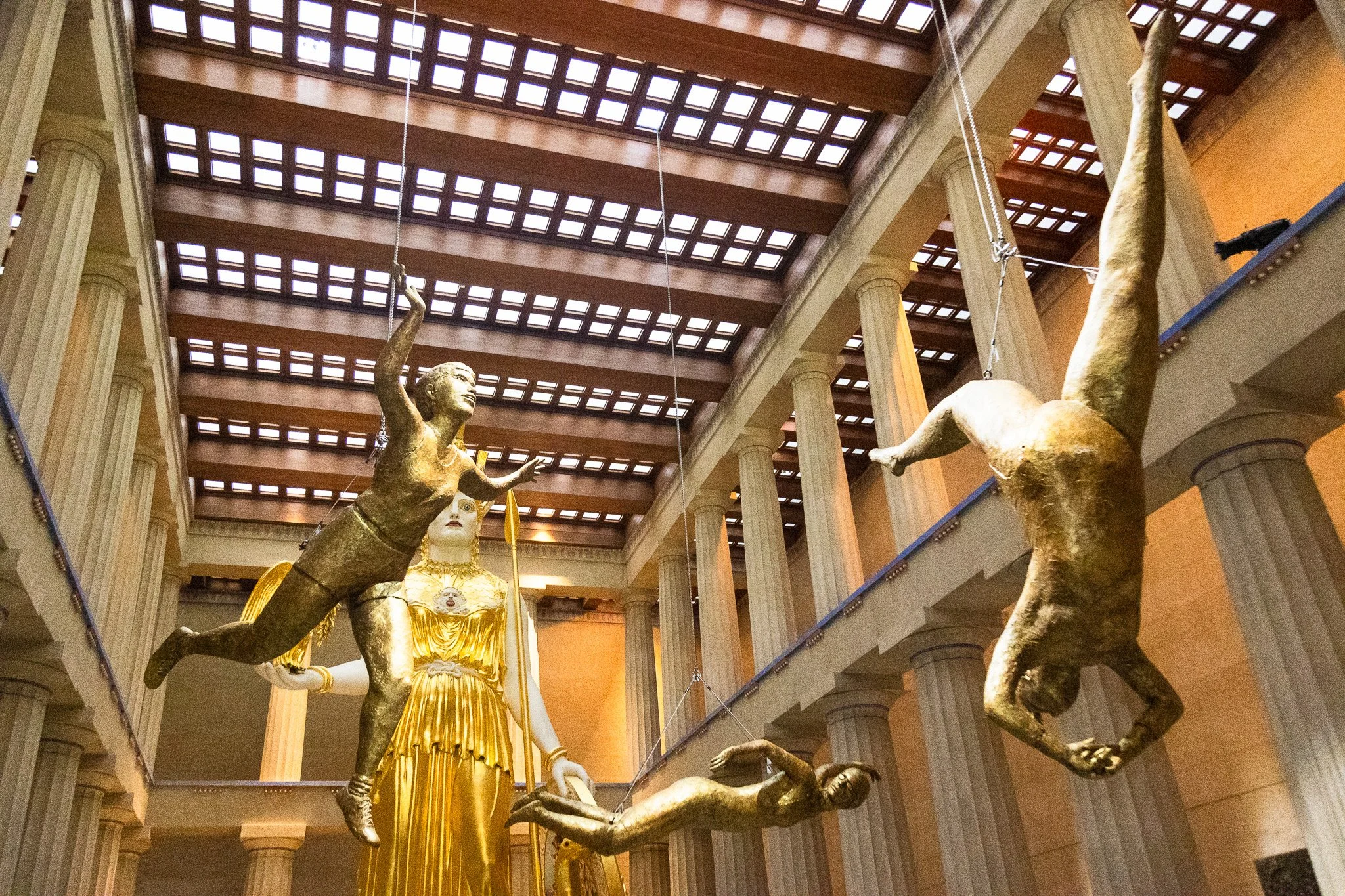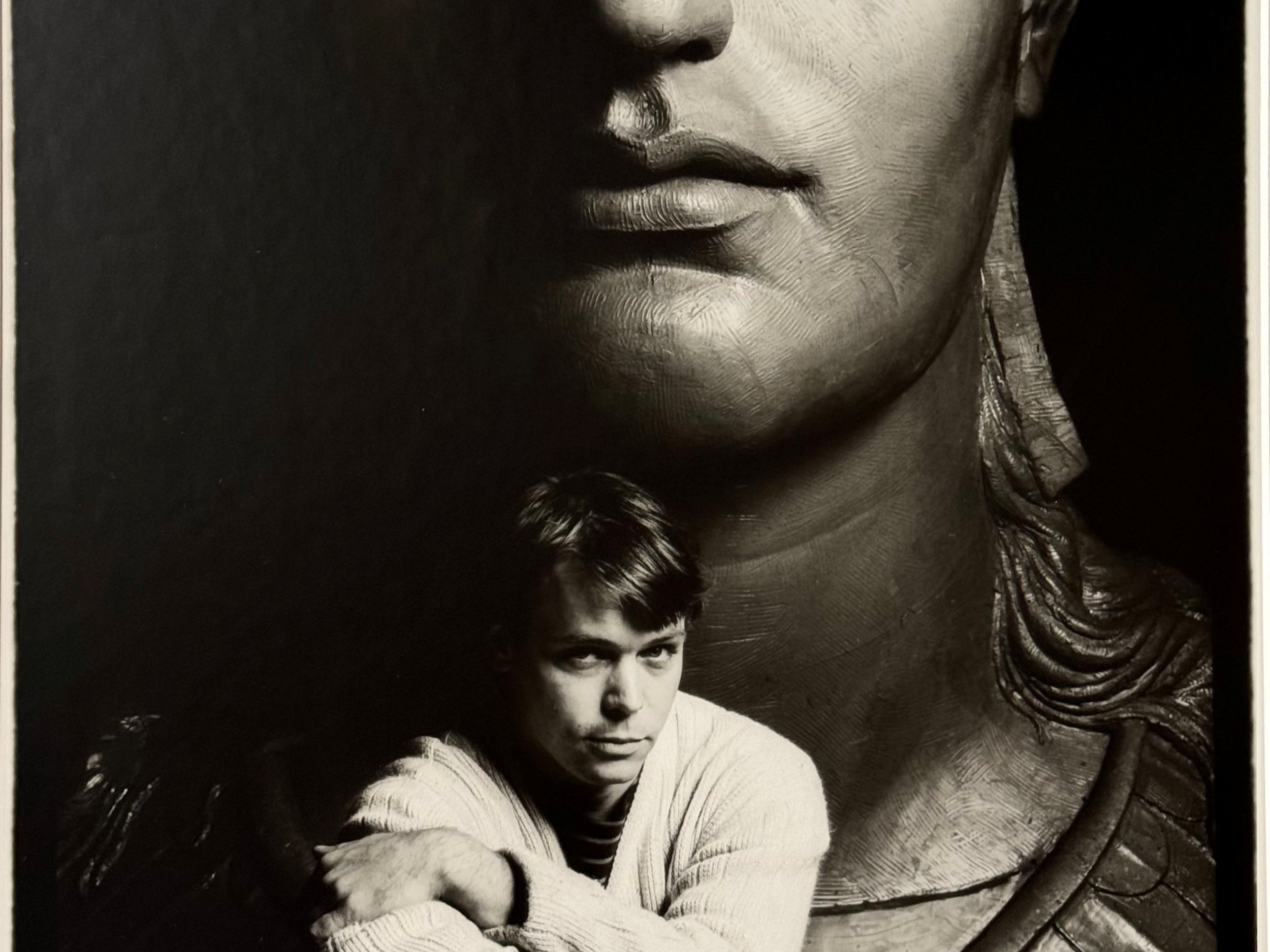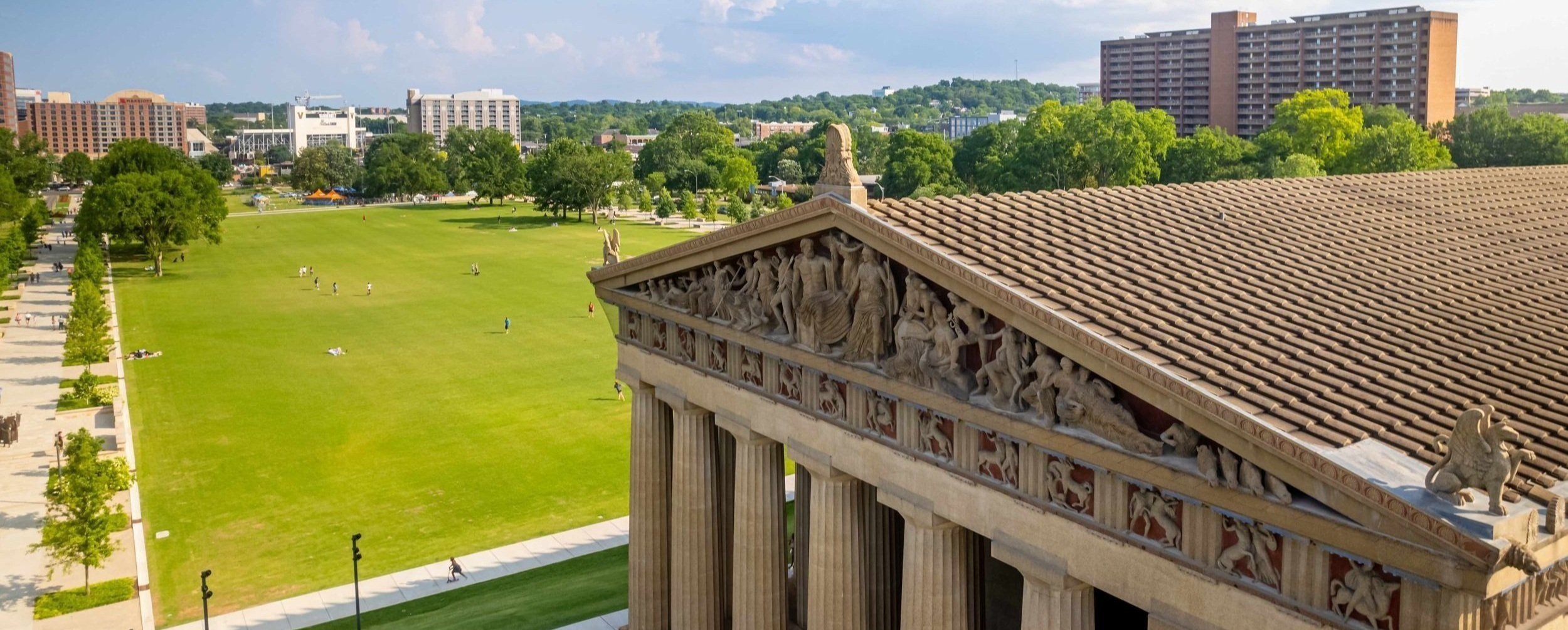
Centennial Park
Nashville’s Central Park, home to the iconic Nashville Parthenon, founded in 1903.
Centennial Park
Centennial Park is located at 2500 West End Ave, Nashville, TN, and is a vibrant urban green space that has been Nashville’s central and cultural park since its inception. It is centrally located in the middle of the city, houses the Parthenon museum as its centerpiece, and hosts ongoing arts and cultural events for our community. View hours and directions.
Listed on the prestigious National Register for Historic Places, Centennial Park is a 132-acre public park established in 1903 and features the iconic Parthenon, a one-mile walking trail, Lake Watauga, Centennial Art Center, Centennial Performing Arts Studios, Musicians Corner, the sunken gardens, a Bandshell, an events shelter, sand volleyball courts, and a dog park. Over 3 million people visit each year to enjoy the beauty of the park, engage in healthy outdoor activities, and see the Parthenon. Visitors also love attending signature events like Musicians Corner, Nashville Earth Day Festival, Celebrate Nashville, Big Band Dances, and Tennessee Craft.
Centennial Park is owned by the city of Nashville and managed by Metro Parks and Recreation Department. Centennial Park Conservancy serves as the nonprofit support group of the park and Parthenon in a public-private partnership with Metro Parks. Our mission is to sustain the park’s vibrancy by supporting its revitalization and activation, and ensure it remains a welcoming destination for recreation, culture, education, and community connection for all.
Centennial Park’s 132 acres is comprised of many areas:
1. PARTHENON - The Nashville Parthenon stands proudly as the centerpiece of Centennial Park and Nashville’s iconic landmark. The building is the only full-scale replica of the Athenian original and includes an art museum and 42-foot statue of Athena.
2. CHILDREN’S MEMORY GARDEN - Dedicated in 1996, this special area of the park is a place of reflection and comfort for families who lost a child to violence and community remembrance of lives lost too early.
3. PLAYGROUND - The playground in Centennial Park is surrounded by trees that offer a large and shady place for families to explore and for kids to climb, run, slide and swing within the park.
A. CENTENNIAL PERFORMING ARTS STUDIOS - Centennial Performing Arts Studios hosts music, theatre, and dance programs for adults and children, including the Centennial Youth Ballet and Centennial jamBands. (No public restrooms.)
4. CENTENNIAL ART CENTER - Centennial Art Center is located on the 25th Avenue North and Park Plaza corner of the park. Originally built as a swimming complex in 1932, it was closed in 1961 due to Metro Nashville's refusal to integrate the pool. Centennial Park Conservancy explored this dark time in the park’s past at a 2018 symposium “Wade In These Waters.” The building currently features an art gallery and visual arts teaching studios for painting and pottery.
5. MUSICIANS CORNER - Since 2010, Musicians Corner has provided free public access to live music in Centennial Park. The series takes place in May, June, and September and has presented over 1,500 emerging and established artists including Emmylou Harris, Chris Stapleton, The Blind Boys of Alabama, Vince Gill, and Preservation Hall Jazz Band.
6. COCKRILL SPRING - Cockrill Spring is a fresh water spring that was closed at the turn of the century during a cholera epidemic. The spring was daylighted in 2017 as part of the first phase of Centennial Park Revitalization improvements and currently serves as a sustainable water source for the park. Historically, it was a popular watering stop for travelers along the Natchez Trace dating back to the mid eighteenth century.
7. BANDSHELL - The Centennial Park Bandshell was originally built in 1928 and later re-built in 1963. The location has hosted a variety of concerts and artists throughout the years and the Nashville Shakespeare Festival. Nashville native Kay George Roberts became one of the first African American women to conduct a professional symphony in the U.S. when she guest conducted the Nashville Symphony at the Bandshell on May 30, 1976. Other notable performances include: Bruce Springsteen, Roy Orbison, Patsy Cline, Brenda Lee, Jimmy Buffet, Pat Boone, Roy Acuff, and Flatt and Scruggs.
8. TENNESSEE WOMAN SUFFRAGE MONUMENT - Created by the Athena Parthenos sculptor Alan LeQuire and dedicated on August 26, 2016, it commemorates the 19th Amendment, which granted women the right to vote, and honors Tennessee's pivotal role as the 36th and final state needed to ratify the amendment. The monument features statues of prominent figures in the Tennessee suffrage movement, including Carrie Chapman Catt, Anne Dallas Dudley, Abby Crawford Milton, Juno Frankie Pierce, and Sue Shelton White.
9. LAKE WATAUGA & BEEHIVES - Lake Watauga sits in the heart of Centennial Park and was built for the Tennessee Centennial Exposition of 1897. This beautiful lake was dredged and cleaned in 2017 as a part of the Centennial Park Revitalization. There are beehives located on a central island, tucked away from park visitors, that pollinate the park's plants, trees, and shrubs. Honey from the Centennial Park bees is available in the Parthenon Museum Store or in our online store.
10. CENTENNIAL ART CENTER - Centennial Art Center is located on the 25th Avenue North and Park Plaza corner of the park. Originally built as a swimming complex in 1932, it was closed in 1961 due to Metro Nashville's refusal to integrate the pool. Centennial Park Conservancy explored this dark time in the park’s past at a 2018 symposium “Wade In These Waters.” The building currently features an art gallery and visual arts teaching studios for painting and pottery.
11. SUNKEN GARDENS - The Sunken Gardens is a beloved feature of Centennial Park. This well-maintained garden area features an array of blooms, and a secluded place to enjoy an afternoon picnic. It is also the location of many park weddings. For more information about hosting an event at this location please contact Metro Park at 615.862.8400. Also, to commemorate Taylor Swift’s use of the Park, her mention of it in her song Invisible String, and her sold out 2023 Eras Tour Nashville dates, a the City of Nashville commemorated a bench in her honor within the Garden.
12. TAYLOR SWIFT READING BENCH - In honor of Swift’s Eras Tour Nashville performances in 2023, Mayor John Cooper dedicated a bench in her honor with a plaque that says “A bench for you to read on at Centennial Park. Welcome home, Nashville.” (a reference to her Folklore song “Invisible String,” which mentions the park.)
13. VOLLEYBALL COURTS - Centennial Park contains two outdoor sand volleyball courts. Adult volleyball leagues play on the courts.
14. DOG PARK - Centennial Dog Park is located across from the main area of the park on 31st Avenue North on Parthenon Avenue and Park Plaza with separate areas for small and large breed dogs to socialize, play, and explore in the fenced area.
Other Park Ammenities:
THE GREAT LAWN - Centennial Park features a 19-acre great lawn that was restored in 2020 with an underground drainage system, soil amendments, laser grading, and turf that is more durable for large crowds and enables. Two 20-foot wide pedestrian promenades were introduced on each side of the lawn to provide more space for pedestrians and enable visitors to travel from the park’s West End Avenue entrance to the Parthenon.
SPORTSPLEX - The Centennial Sportsplex is home to several fitness activities , including tennis, swimming, and ice skating.
THE PAVILION - The Pavilion is located near the corner of 28th Avenue North and Poston Avenue. This covered shelter is currently off limits and will be reimagined in the months to come as a contributing structure in the park.
EVENTS SHELTER - The former Events Shelter was located on the Park Plaza side of the park and housed events including the park’s Big Band Dances. The shelter is currently being replaced by a world-class Event Pavilion as a community gathering space to host the popular dances and community events.
COMING IN 2026: the Croquet Cafe, and new Event Pavilion.

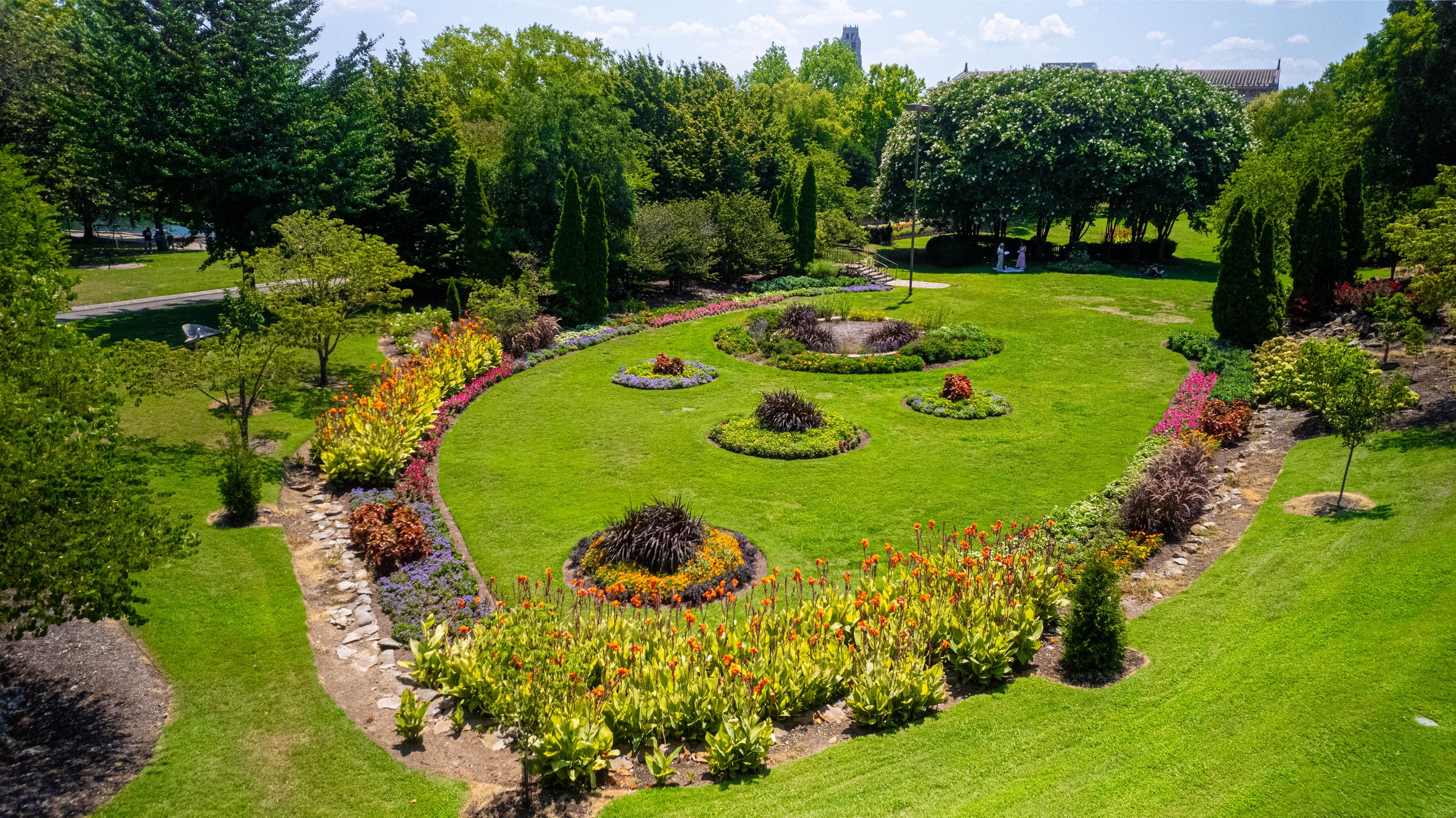
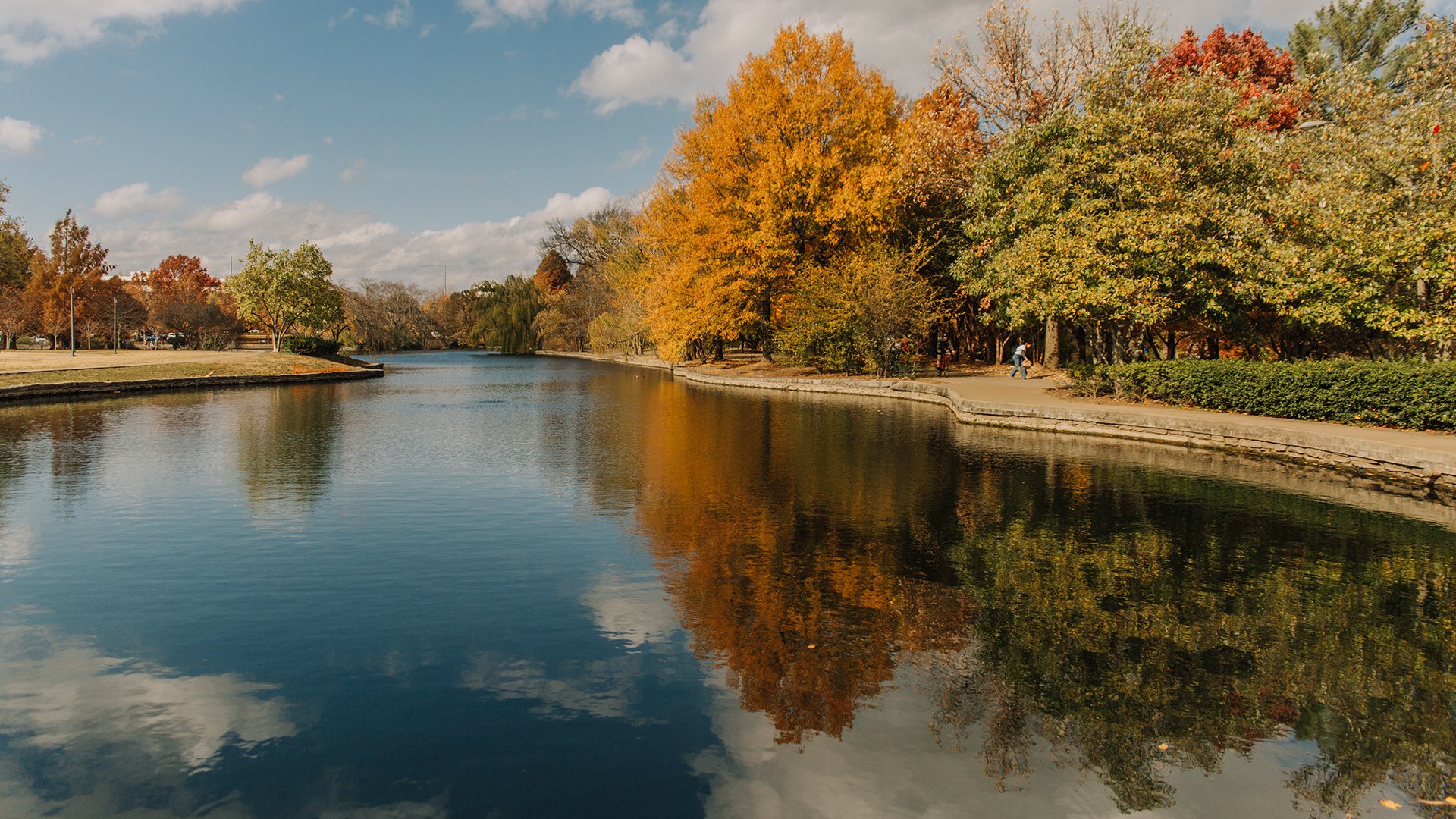
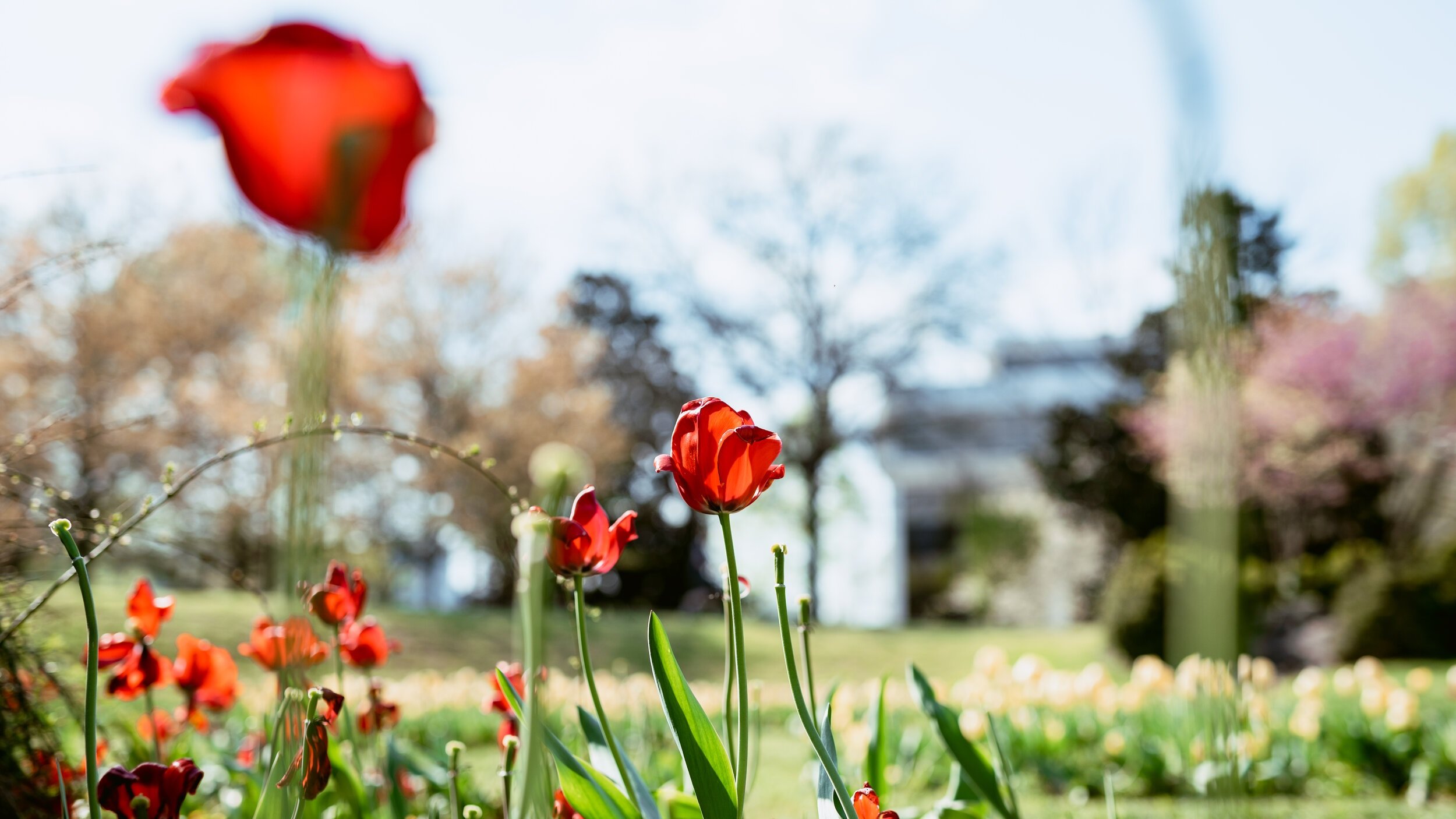
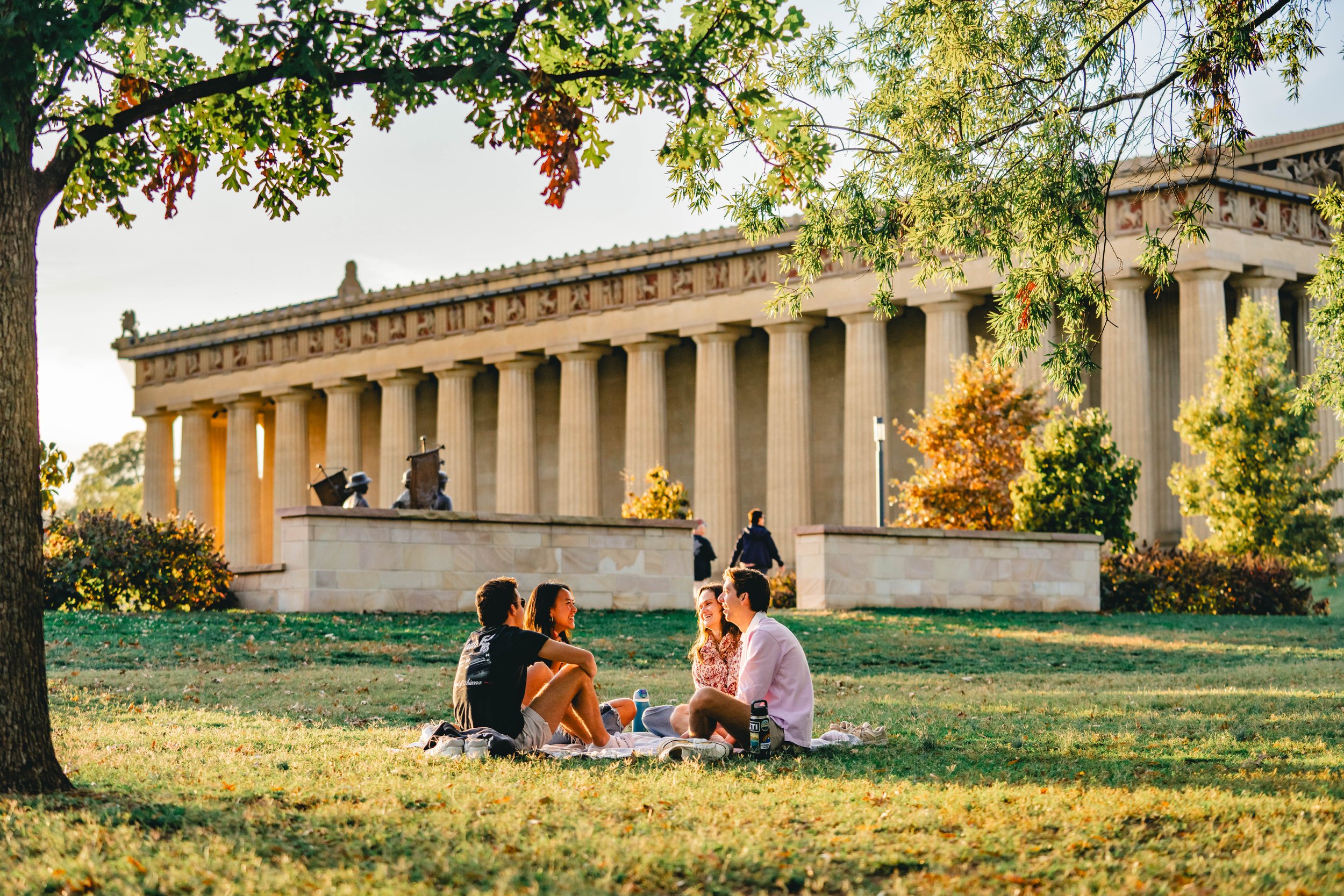
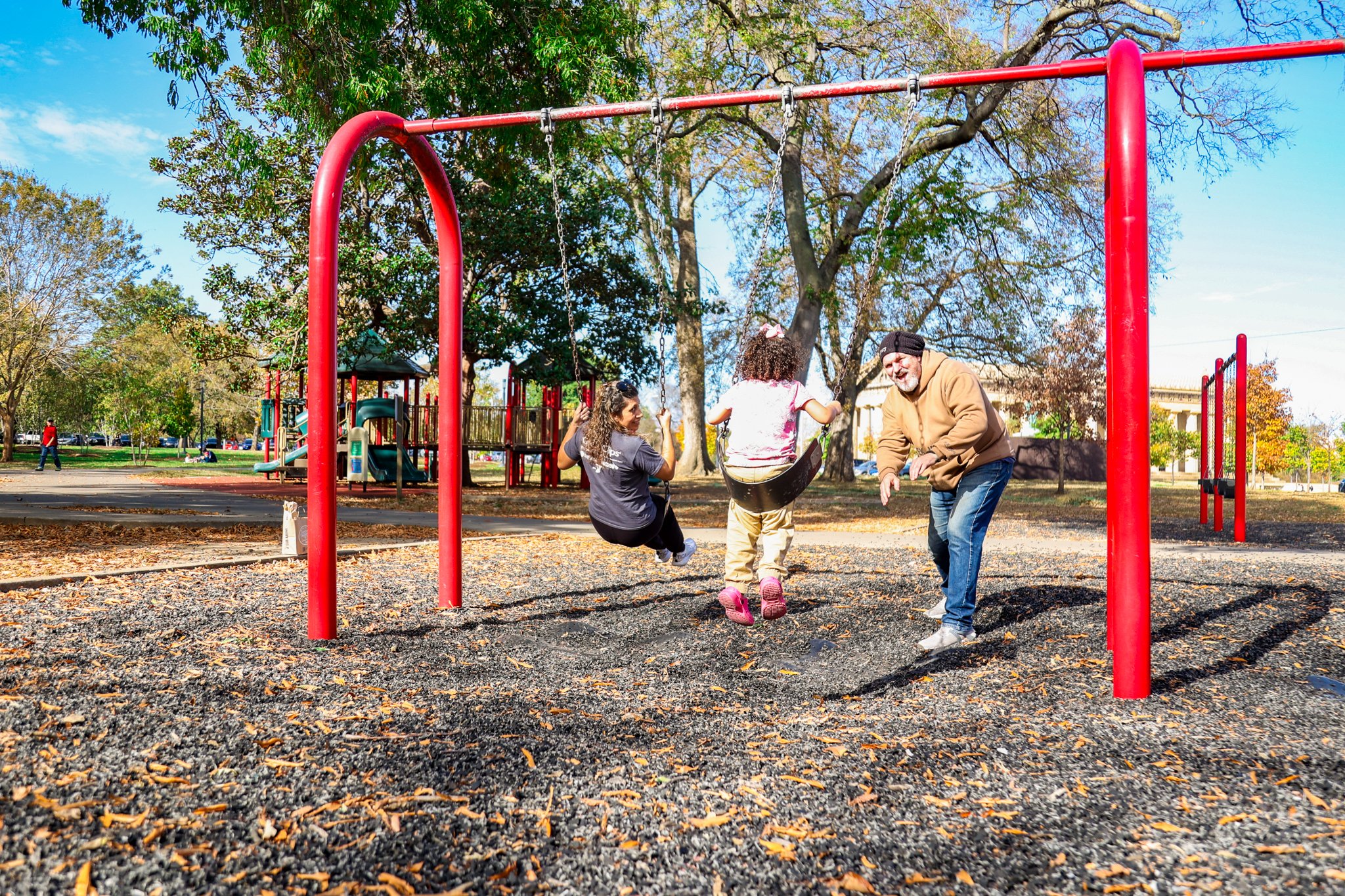

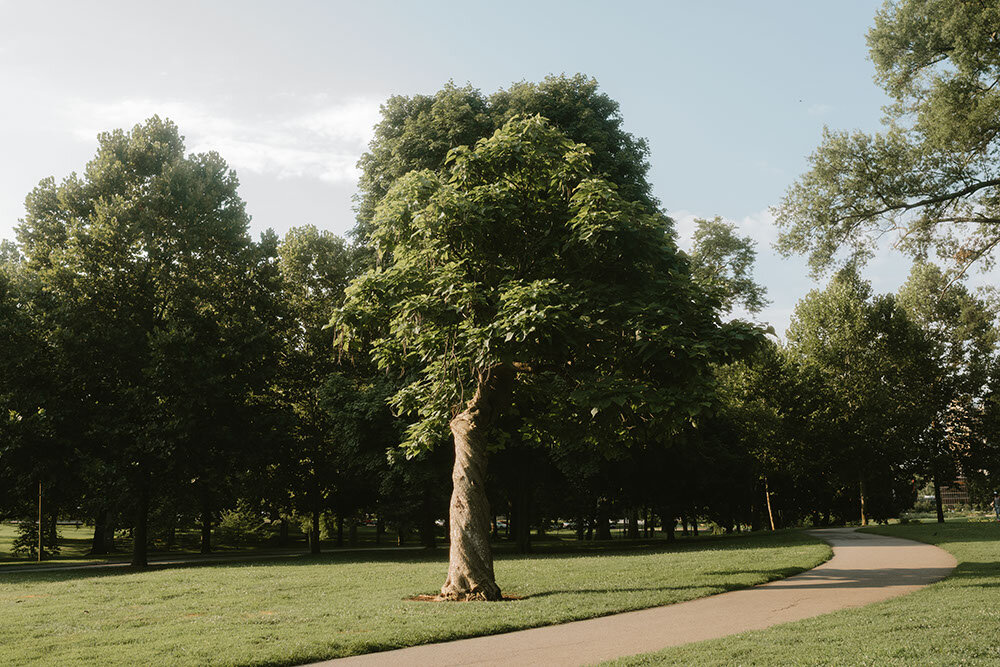
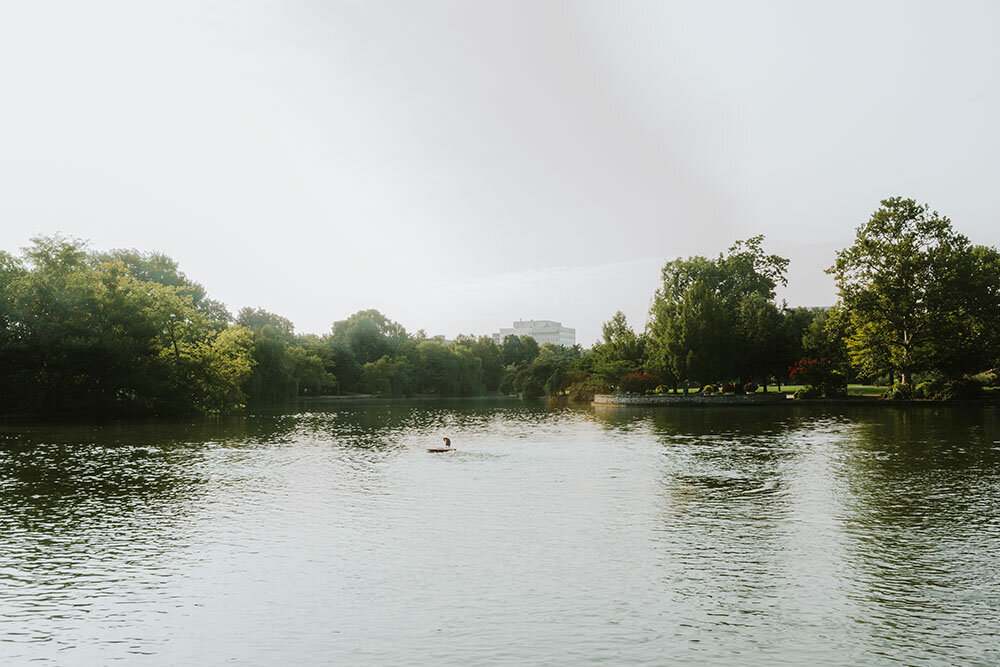
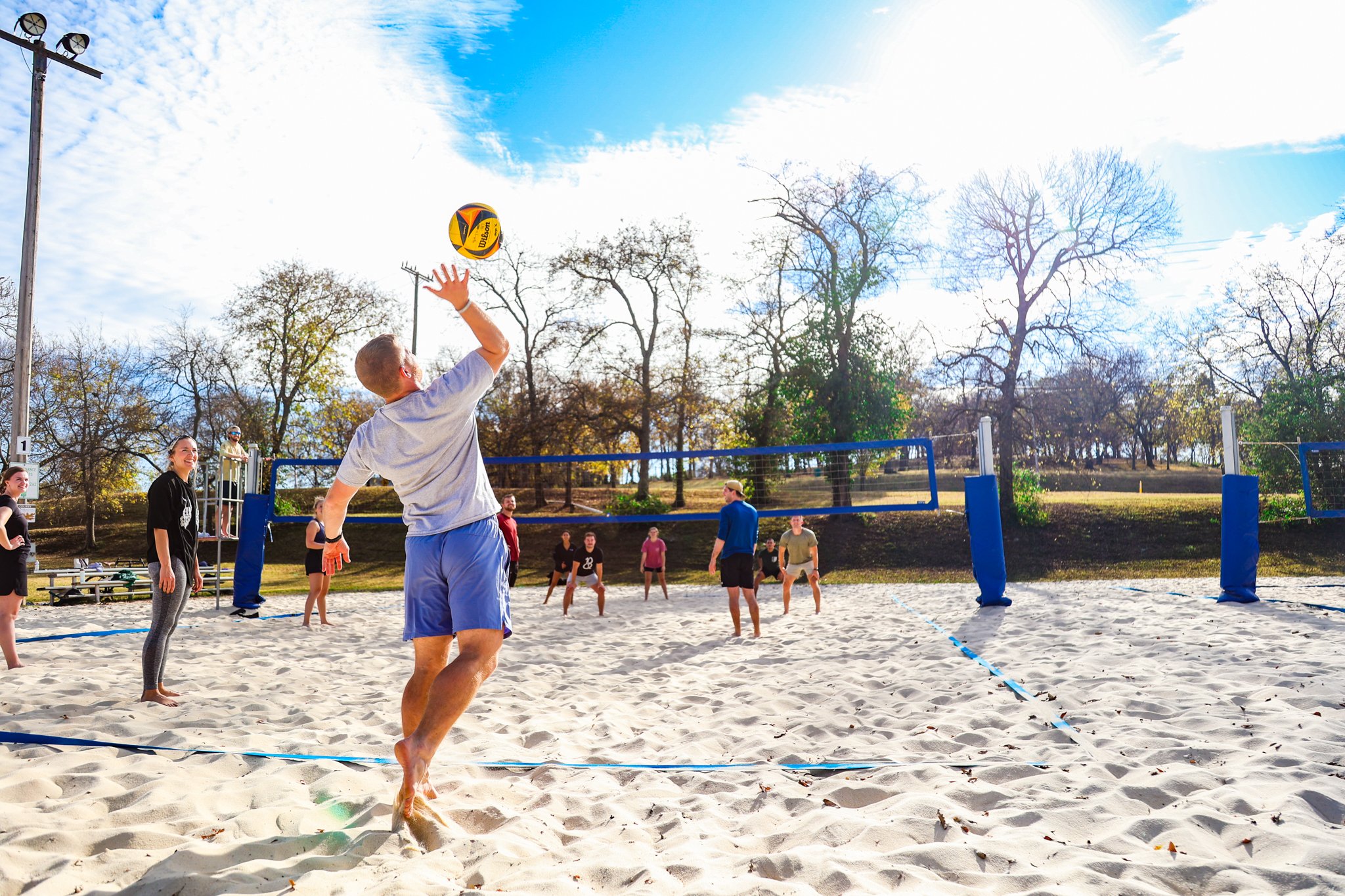

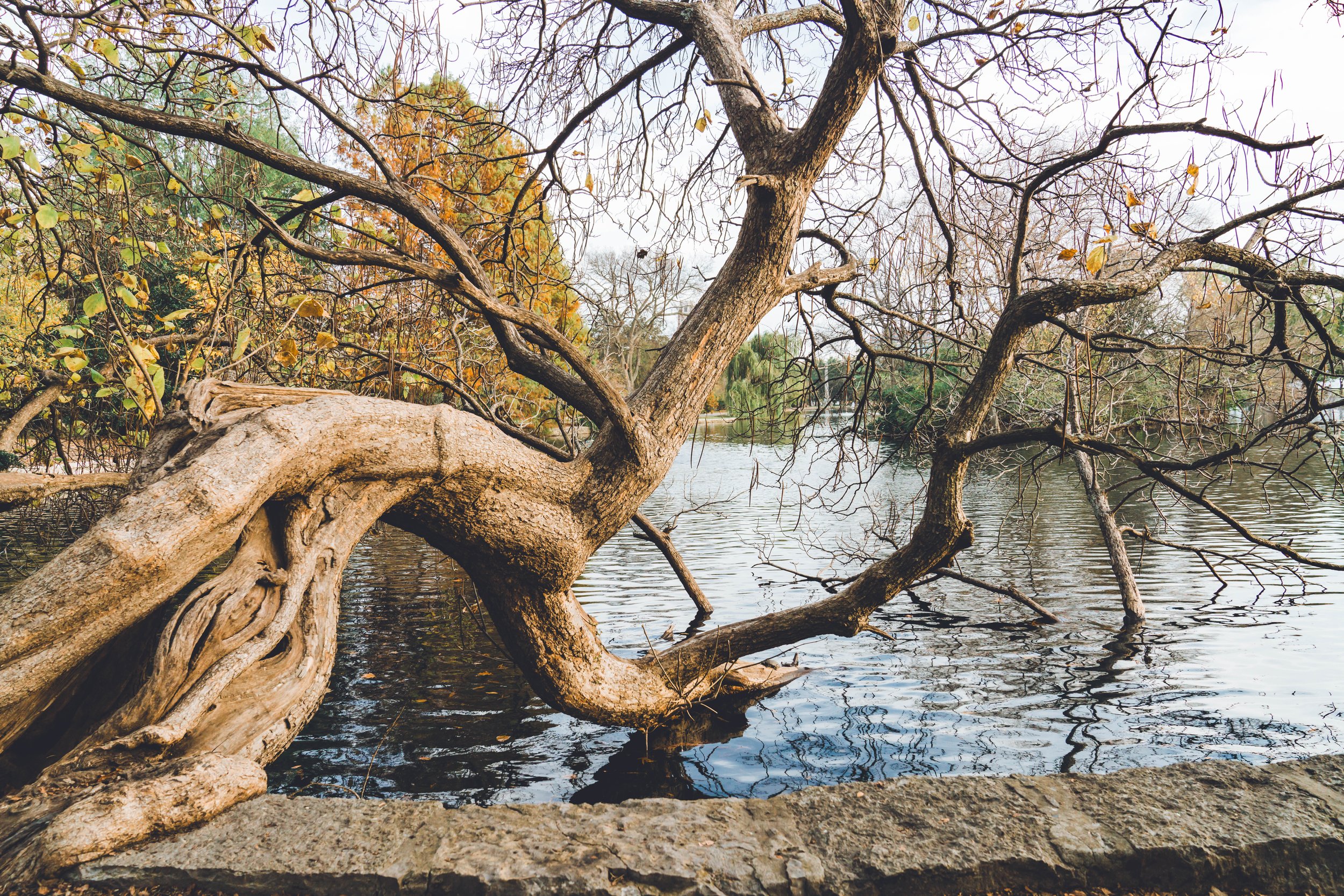
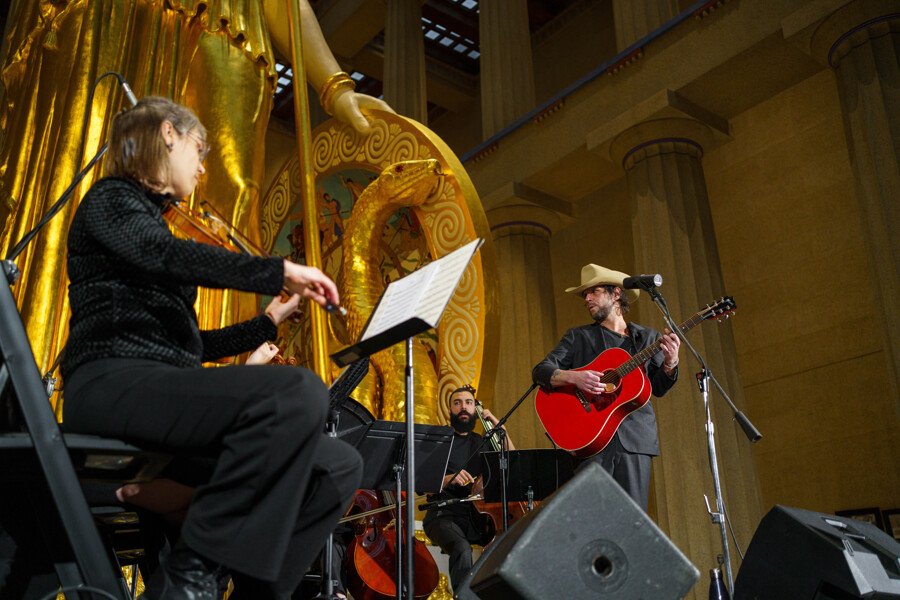
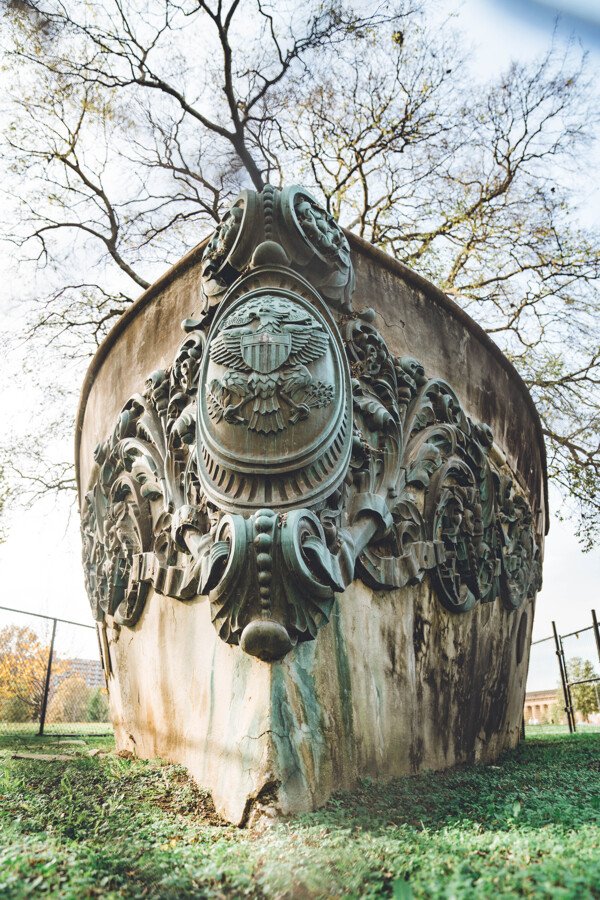

Upcoming Events
Centennial Park Conservancy underwrites Parthenon programming and presents and funds a variety of primarily free events that support our mission and make a positive impact on our community.
HISTORY OF CENTENNIAL PARK
Tennessee Centennial Exposition
Early in the city's history, Nashville acquired the nickname "Athens of the West," because of the emphasis on education, especially a classical education, which included studies in Greek and Latin. As the U.S. spread westward, Nashville ceased to be on the frontier and the nickname changed to "Athens of the South." The name was firmly established by 1895, when Tennessee began planning an exposition in celebration of its first 100 years of statehood. Following the lead of Chicago's Columbian Exposition of 1893, the planners of the Tennessee Centennial Exposition chose a neo-classical style for the buildings. When Nashville offered to build the art pavilion for the fair, the natural choice for the Athens of the South was a replica of the Parthenon.
The Tennessee Centennial Exposition, commemorating 100 years of statehood, was held in Nashville in 1897. The Exposition incorporated 20 temporary buildings on a 200-acre site. Previously a racetrack, the property began to take the form of the park we are familiar with today. The Exposition ran from May 1 to October 31, 1897 and was visited by 1.8 million people. Like a world's fair, all the exhibit buildings were temporary and made of inexpensive materials. Following the exposition, the majority of the Centennial buildings were moved or destroyed. However the Parthenon remained the centerpiece of the empty fairgrounds.
Centennial Park is Established
In 1901, the Nashville Board of Parks Commissioners was created. As an independent body, many of the members were on committees for the Tennessee Centennial Exposition and embraced the concept that cities should provide parks as a respite for urban dwellers. To overcome financial hurdles, Percy Warner, owner of Nashville Railway and Light Company, purchased the first 72 acres of the exposition grounds and donated it to the Park Board in 1902. Centennial Park was established as Nashville’s first large public park in 1903 with the Parthenon as its centerpiece.
Ongoing Changes to the Park
The development of Centennial Park paralleled national trends in urban park planning. In the first two decades as a park, a significant number of monuments and structures were added to the landscape. The park followed the prominent idea from the turn-of-the-century that parks should be a place of leisure and relaxation. The commemorative nature of many of the objects in the park brought a sense of reflection into a natural environment. However, the Commissioners also embraced the Parks and Playground Movements of the early twentieth century. Those movements believed that parks could not only serve as places for quiet communion with nature, but also the site for active recreation, and thus a playground was added to Centennial Park in 1909.
By 1916, a community center was constructed and organized athletics were promoted city-wide, moving Nashville seamlessly into the Recreation Movement era. A swimming pool and bathhouse were also added to Centennial Park in 1932.
In the 1950s, there was a transition from classical architecture to a decidedly more modern feel within park structural design. The Croquet/Event Shelter was added in 1958 and the Croquet Clubhouse in 1963 under this guise. Representing of advances in technology, Locomotive 576 and the F-86 Aircraft Monument were also added to the park around this time period. They have since been removed to return the park's focus to green space and cultural programs.
Uncomfortable truths exist in the history of the Centennial Park, including the inequitable segregation that prevented Nashville’s Black community from accessing this public land for decades. In 1961, two young African-American men, the Hon. Howard Gentry and the late civil rights activist Kwame Lillard, decided to go swimming in the municipal pool located in Centennial Park, which was restricted under the Jim Crow laws of the era for whites only. Days later, the city closed all its public pools and left them shuttered for three years. Centennial Park’s pool was later filled with cement and the building is now repurposed as the Centennial Arts Center. Centennial Park Conservancy explored the injustice of the park’s past at a 2018 symposium “Wade In These Waters.” Centennial Park was integrated in the mid-1960s and has since become a public space where all Nashville residents and visitors can congregate and connect.
Centennial Park Memories
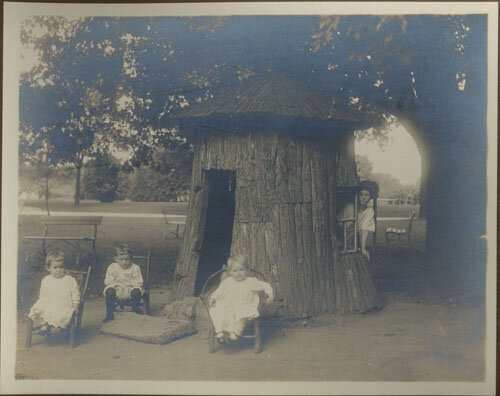
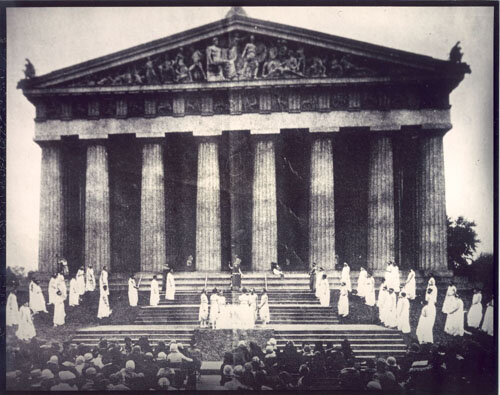
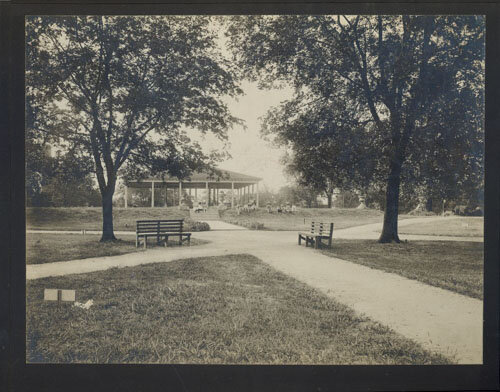
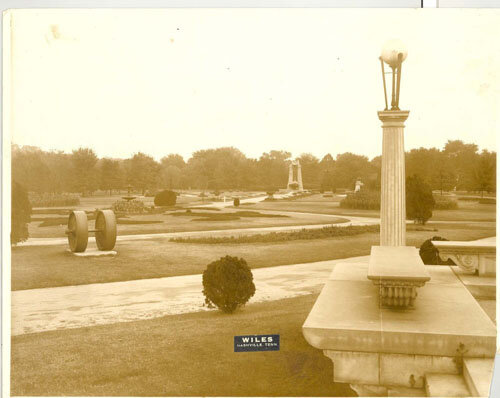
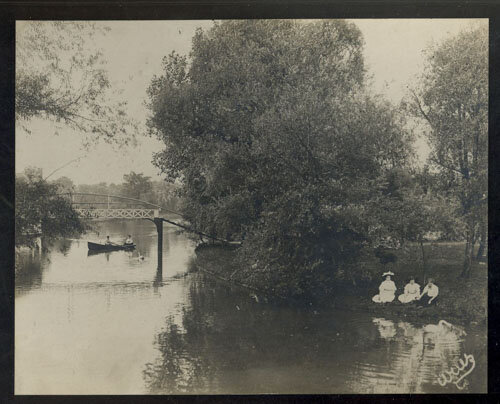
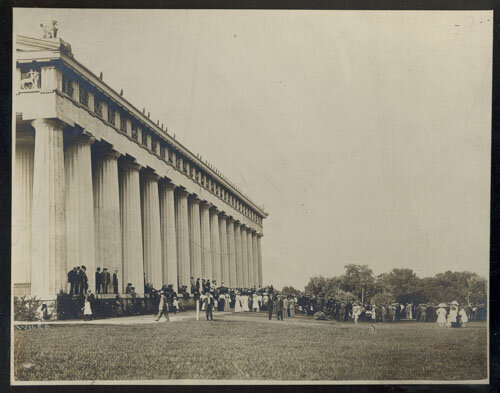
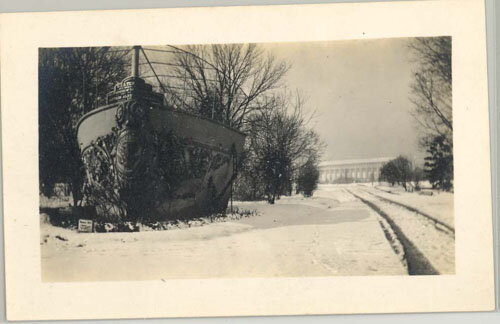
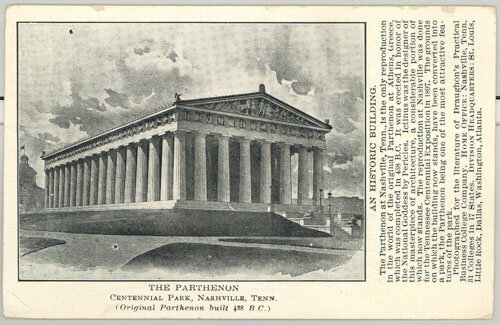

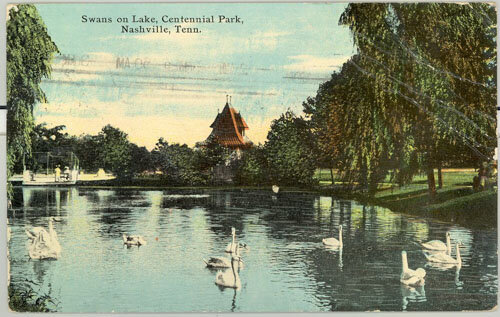
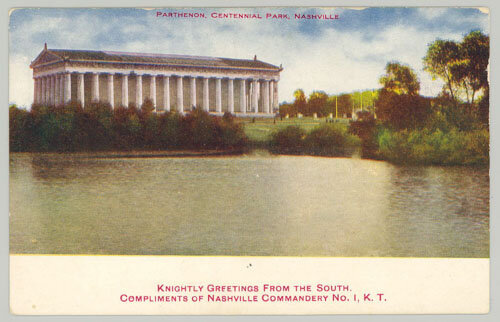

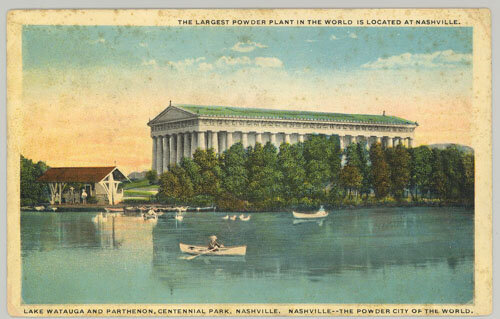
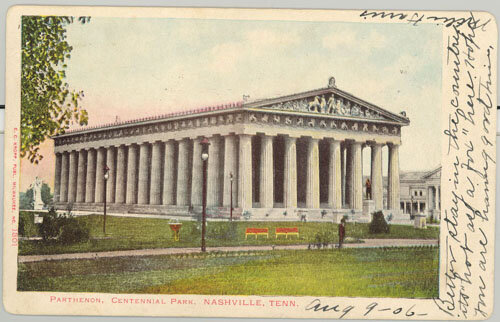
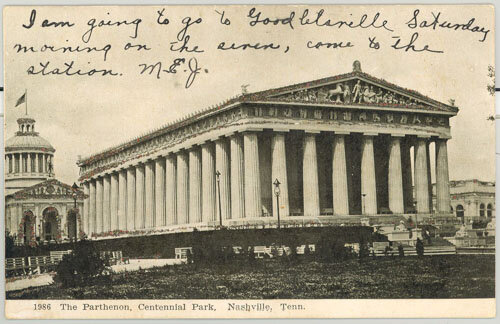


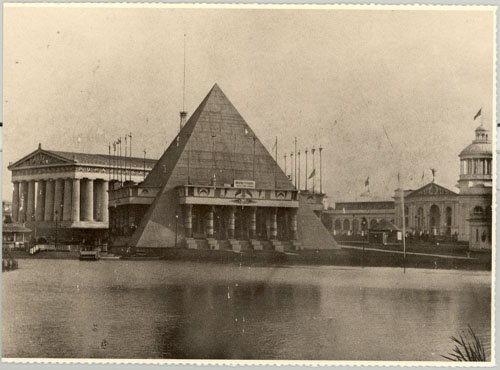
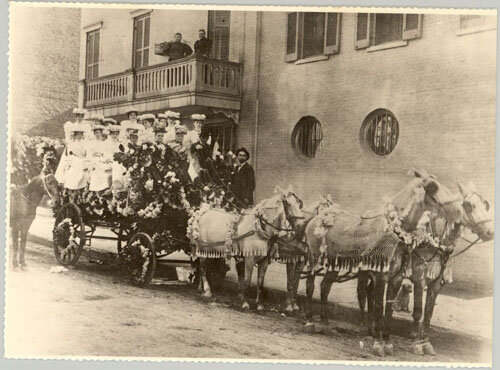

The Nashville Parthenon
The Nashville Parthenon was initially built as a temporary structure for the Tennessee Centennial Exposition with the exterior coating, sculpture, and decorative work made of plaster. However, the building slowly deteriorated over the next 20 years. Repeated patching kept the building’s destruction at bay until 1920 when the city was forced into a permanent decision: tear it down or rebuild it with permanent materials.
The decision was made to make the Nashville Parthenon a permanent structure and construction was completed in 1931. When the doors were opened to the public, two major elements were still missing: the great statue of Athena in the Naos and the Ionic frieze on the exterior. Centennial Park Conservancy, which at that time was called The Athena Fund, collected donations to build a statue of Athena, and in 1982 the Park Board commissioned Nashville sculptor Alan LeQuire to recreate the 42-foot statue for the interior. This monumental task took almost eight years. The statue was finally unveiled on May 20, 1990, generating much excitement and a renewal of interest in the Nashville Parthenon as an icon of the city. Additional money was raised during the next 12 years, and in 2002 the statue was finally completed with painting and gilding in 24-karat gold.
The Ionic frieze is expected to be added at a later date through donations to the Parthenon Preservation Fund.
Centennial Park Revitalization
A Centennial Park Master Plan was created in 2010 to preserve the park's unique elements while making it a leader in landscape stewardship and innovation. The Centennial Park Revitalization began in 2015 and two phases of extensive efforts to restore the park have been completed, including cleaning Lake Watauga, daylightling Cockrill Spring, building a permanent location for Musicians Corner, introducing pollinator bees to the park, creating a home for the Tennessee Woman Suffrage Monument, and restoring the Great Lawn. The current phase of improvements will revitalize the Park Plaza northern section of the park, provide access from the 31st Avenue Connector, build a new events pavilion for community gatherings, and a cafe to serve guests. These improvements are expected to begin in 2024.
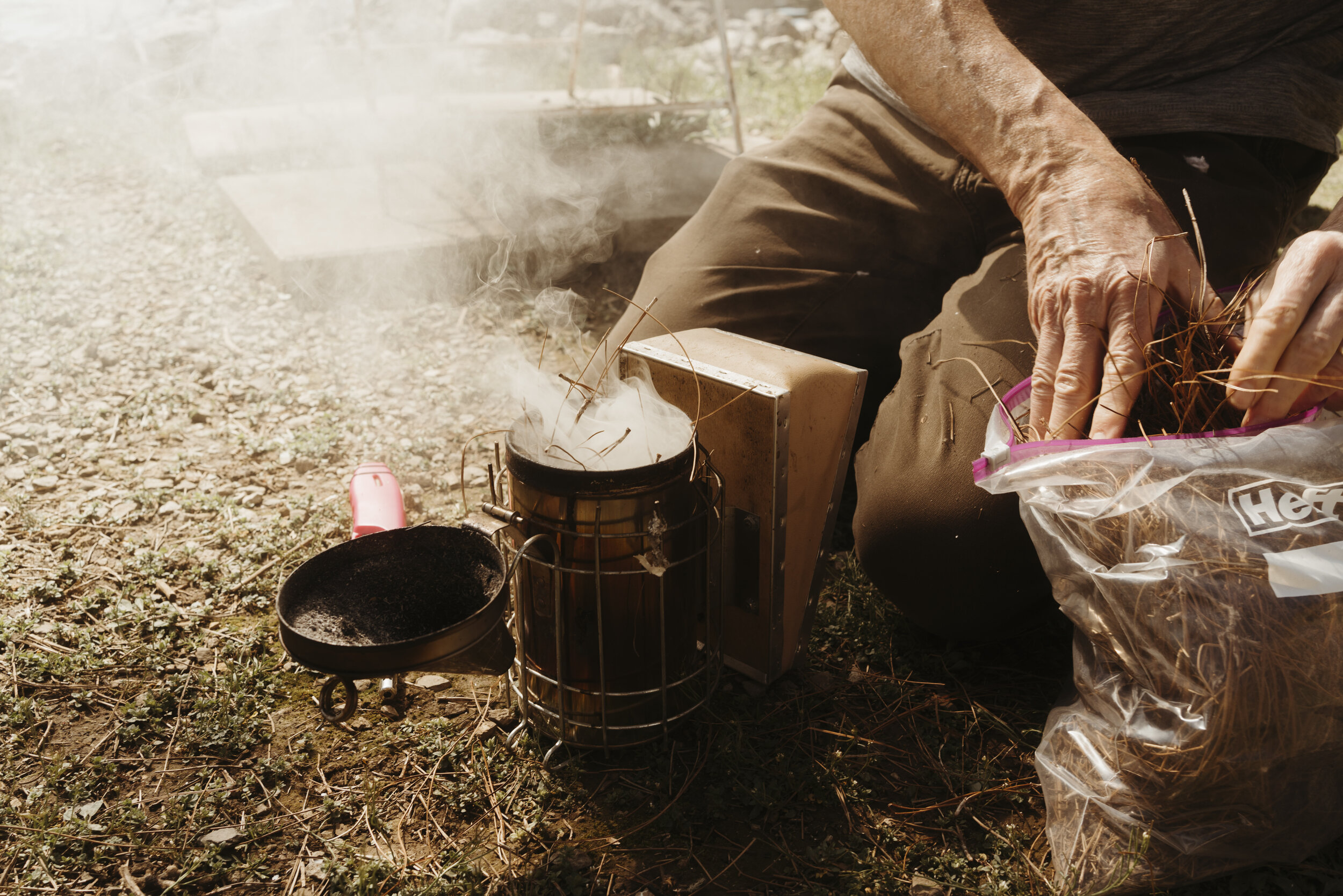
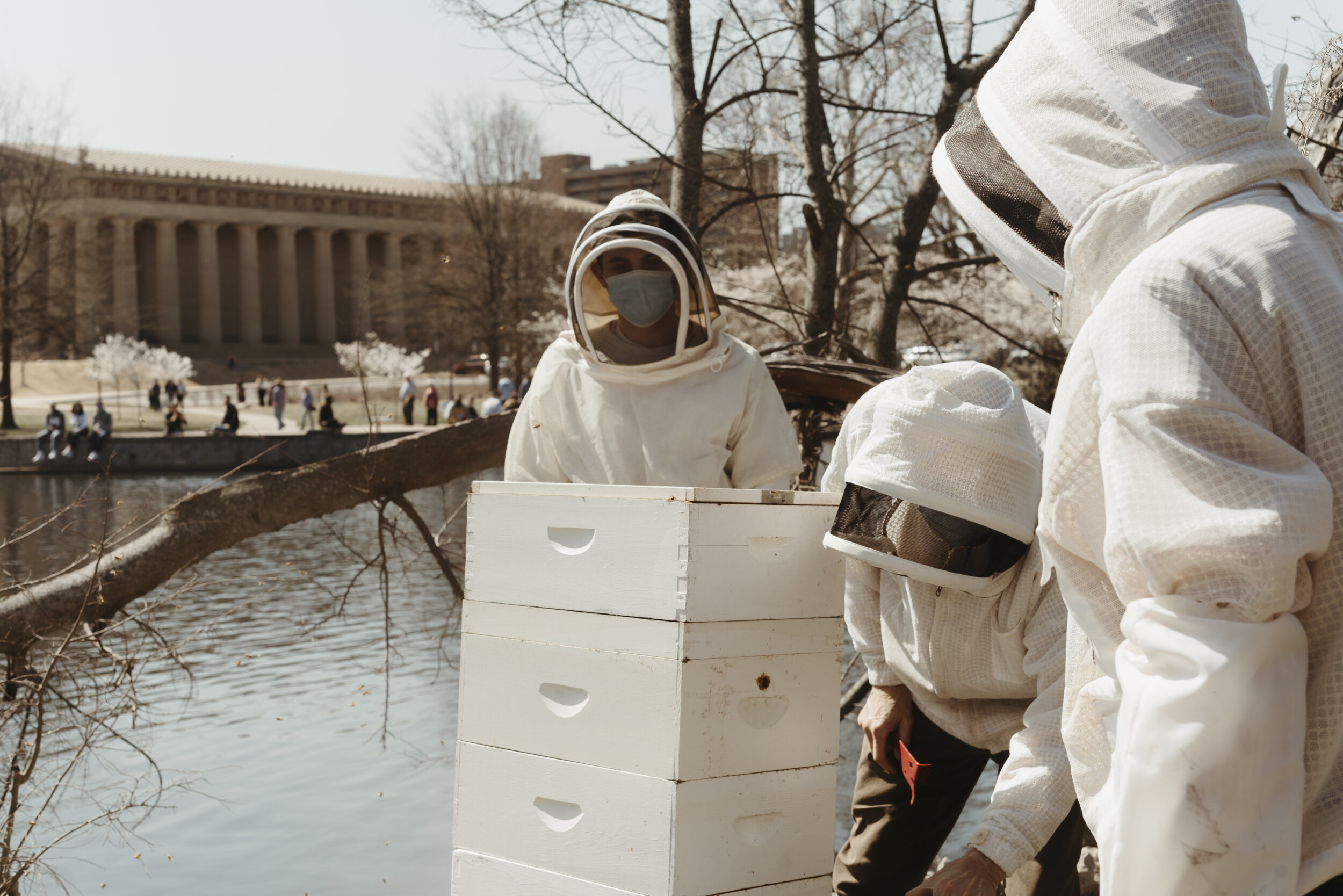
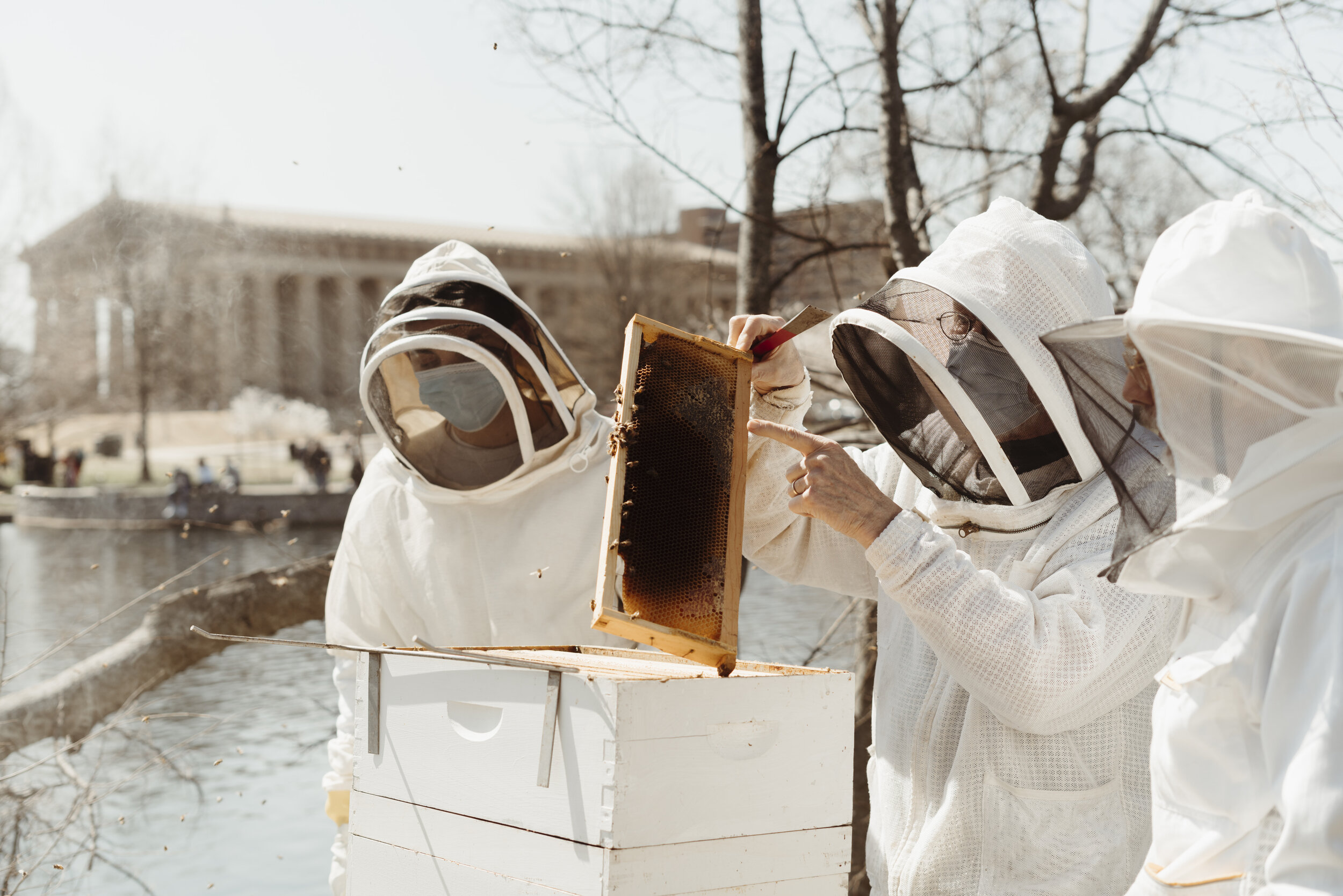

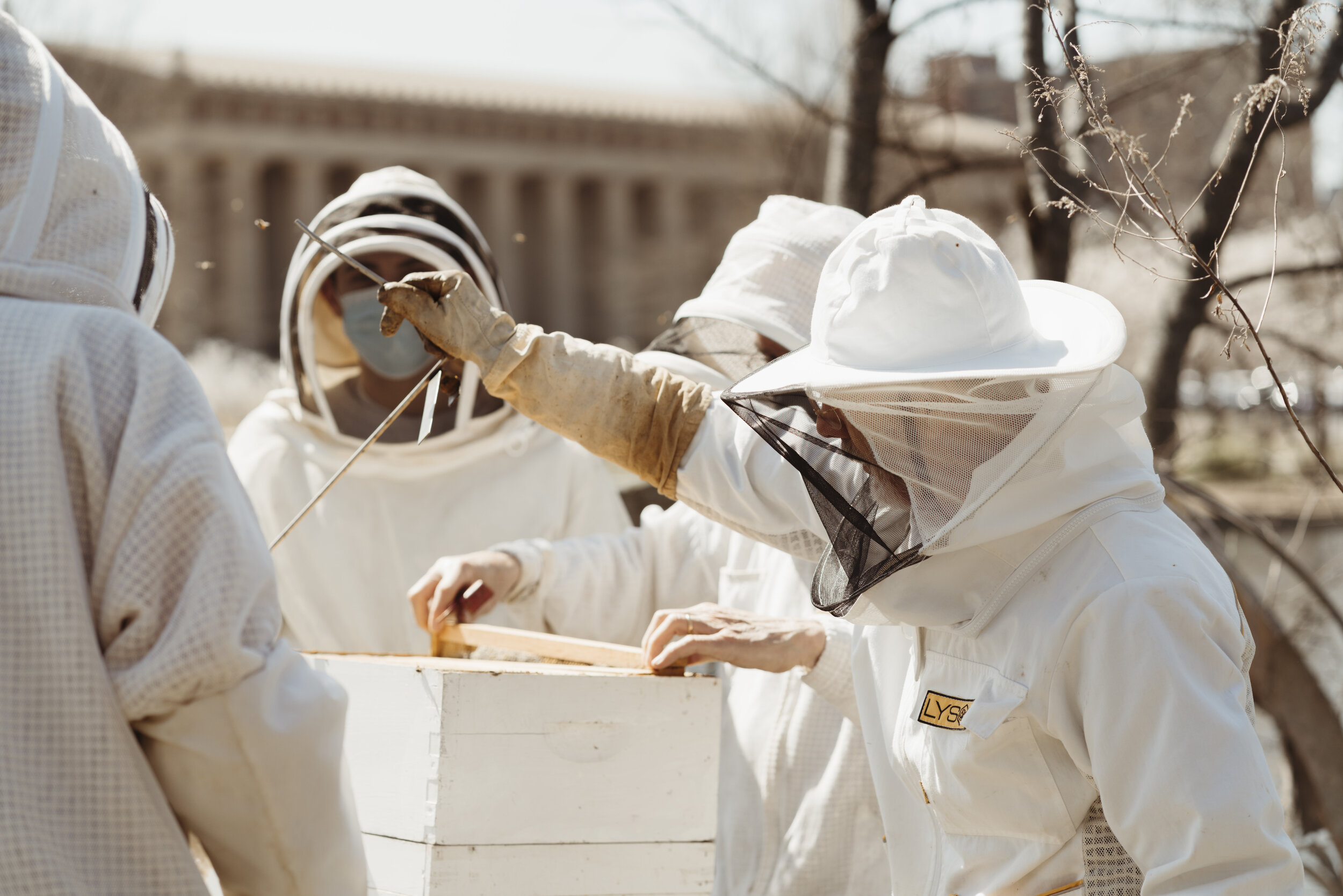
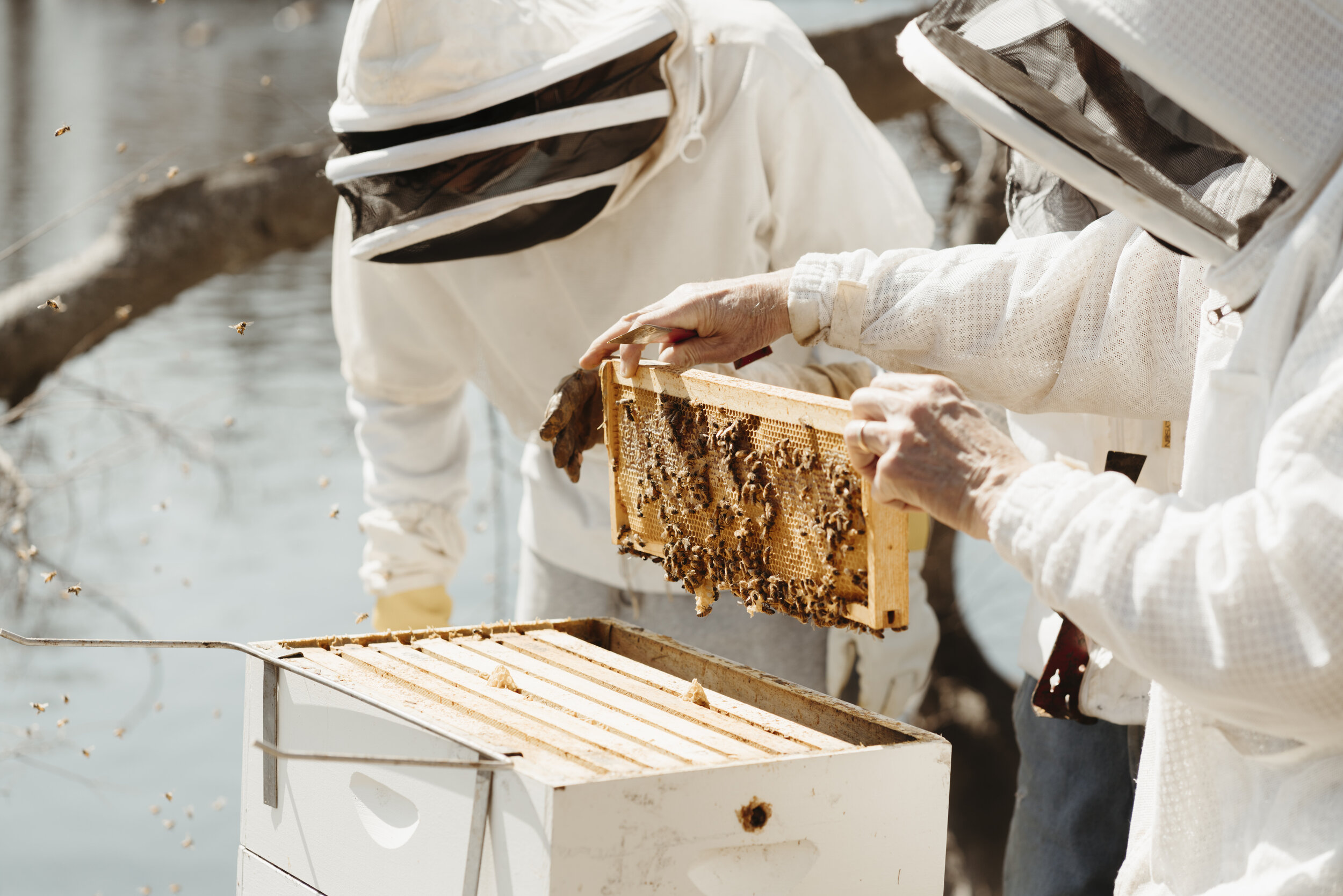
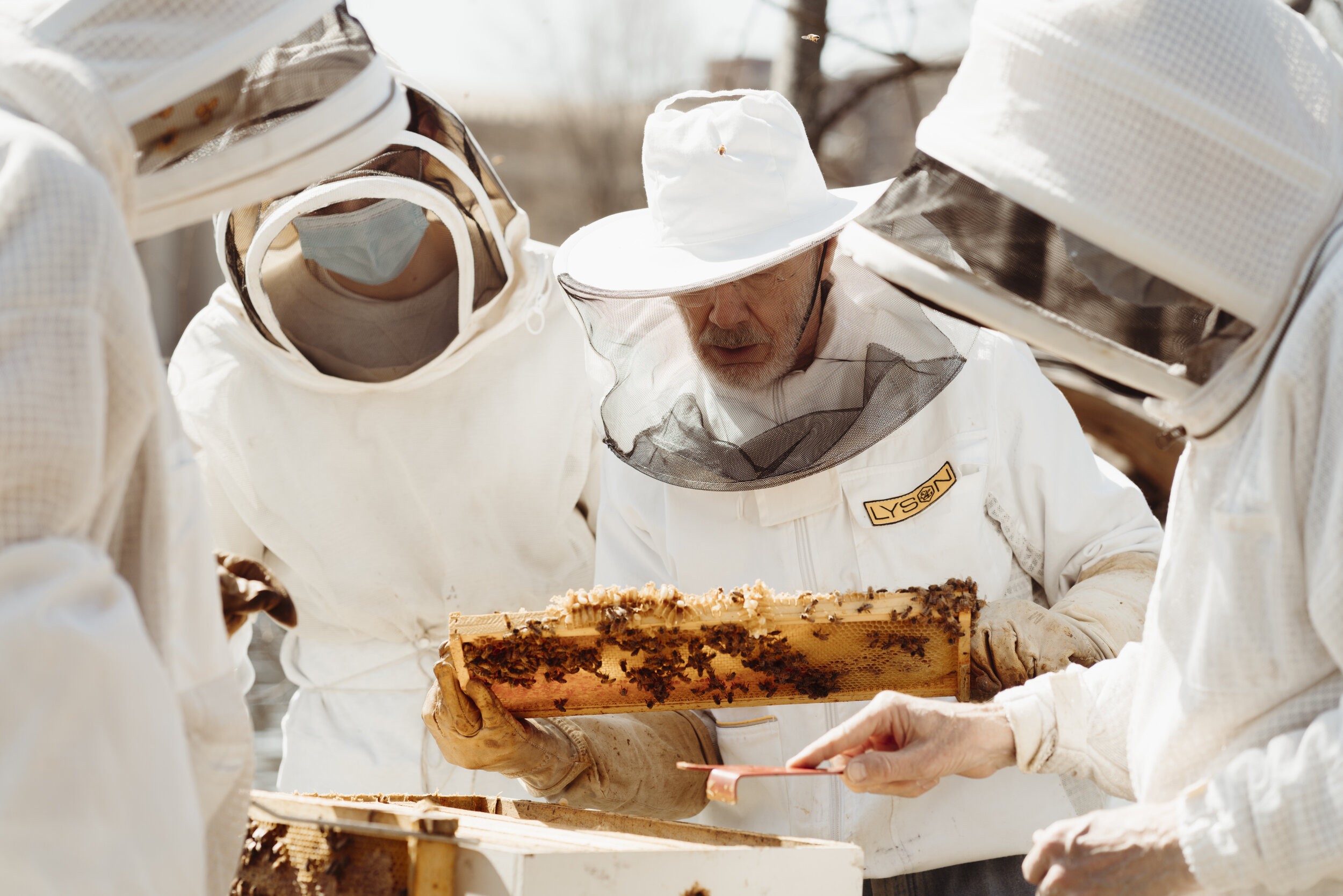
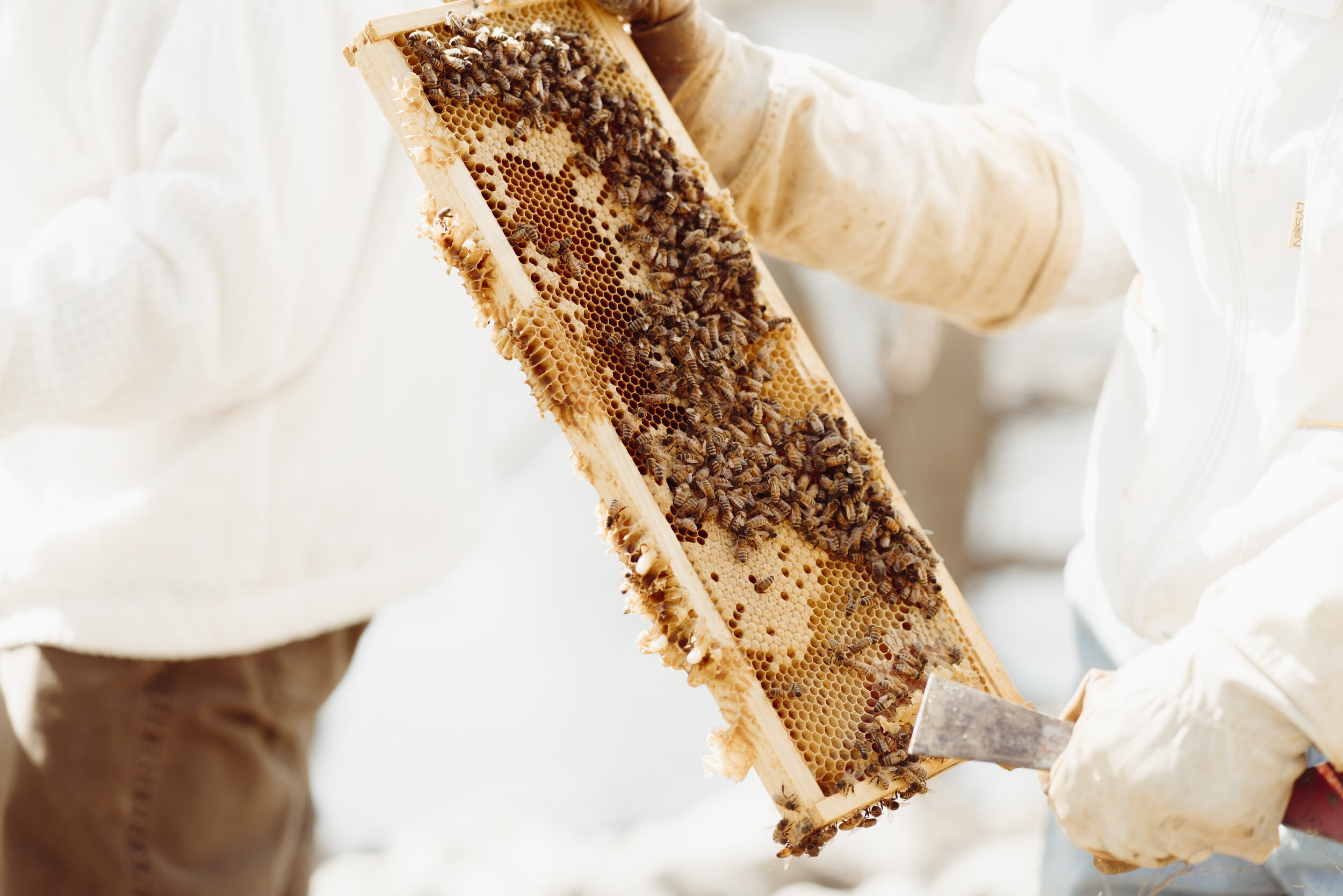
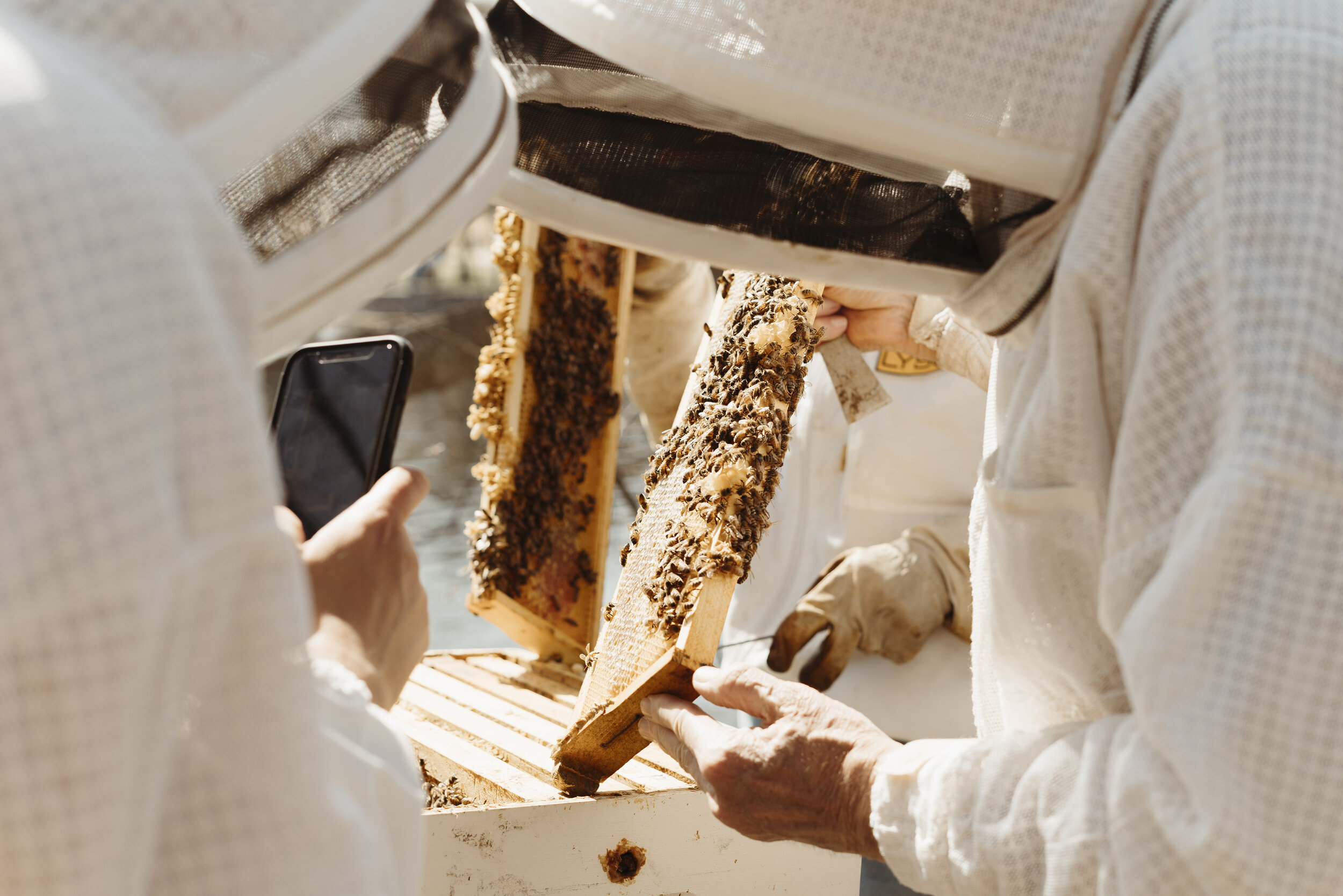

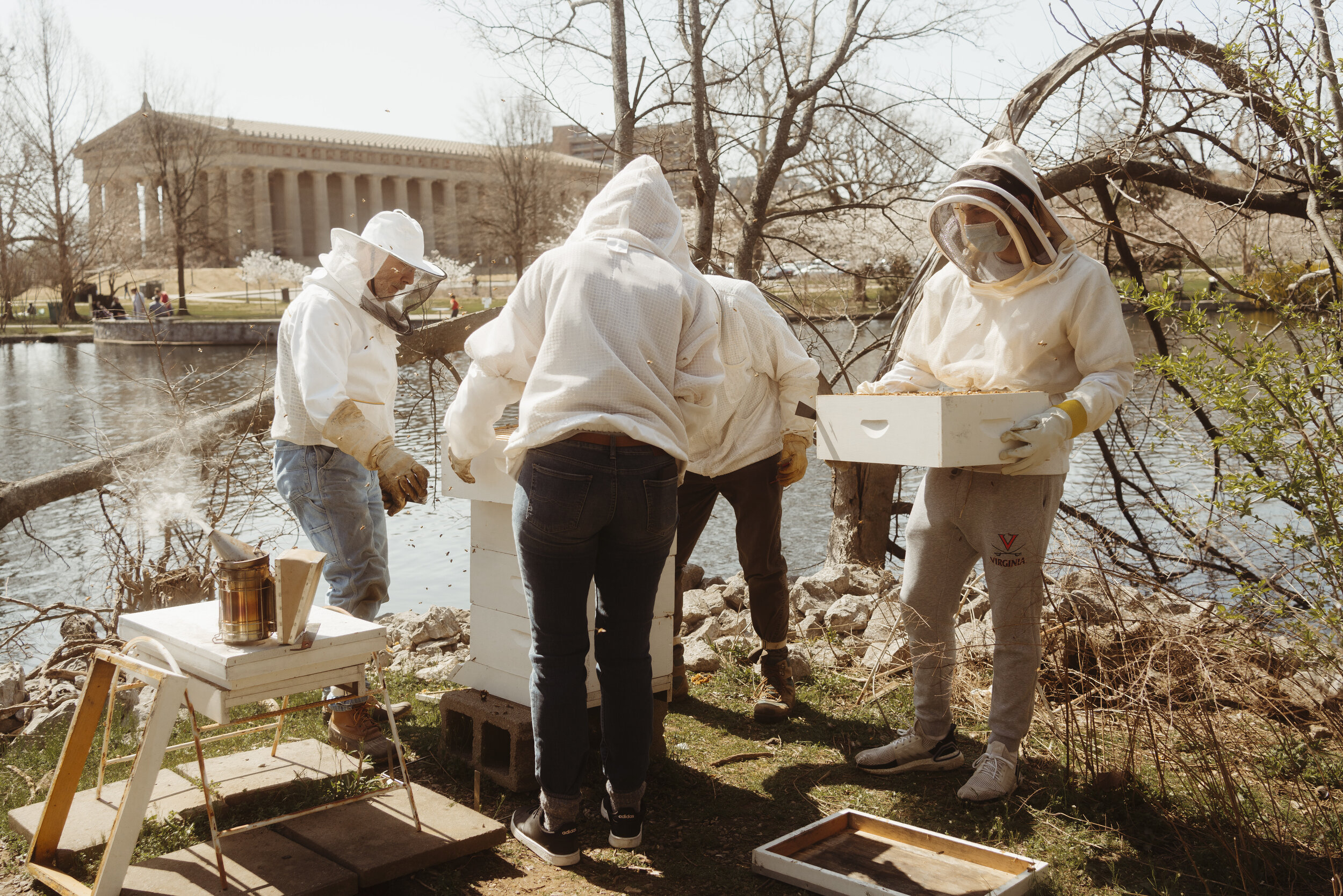
Centennial Park Bees & Honey
As part of the Centennial Park Revitalization, our park is now home to several bee hives. The hives, which are located on Lake Watauga’s island, tucked away from park visitors, are thriving. They are key to pollinating existing plants, as well as new trees and shrubs being planted throughout the revitalization.
Local experts, Nashville Area Beekeepers Association, are maintaining the hives for us. The honey is harvested and available to purchase at the Parthenon Museum Store and in our online store. Special thanks to Tim Netsch and Tara Armistead for introducing the bees to Centennial Park and to Metro Parks for funding their initial care. Thanks to the many generous individuals who devote their time to care for Centennial Park's bees, including Dr. Seth Cooper, Dr. Deb Lannigan, Tara Armistead, Quick Foy, and Dr. Andrea Pruijssers.
Timeline of Centennial Park
-
At vero eos et accusamus et iusto odio dignissimos ducimus qui blanditiis praesentium At vero eos et accusamus et iusto odio dignissimos ducimus qui blanditiis praesentium
-
Proin quam velit, efficitur vel neque vitae, rhoncus commodo mi. Suspendisse finibus mauris et bibendum molestie. Aenean ex augue, varius et pulvinar in, pretium non nisi.
-
Proin iaculis, nibh eget efficitur varius, libero tellus porta dolor, at pulvinar tortor ex eget ligula. Integer eu dapibus arcu, sit amet sollicitudin eros.
-
In mattis elit vitae odio posuere, nec maximus massa varius. Suspendisse varius volutpat mattis. Vestibulum id magna est.
-
In mattis elit vitae odio posuere, nec maximus massa varius. Suspendisse varius volutpat mattis. Vestibulum id magna est.
-
In mattis elit vitae odio posuere, nec maximus massa varius. Suspendisse varius volutpat mattis. Vestibulum id magna est.
-
In mattis elit vitae odio posuere, nec maximus massa varius. Suspendisse varius volutpat mattis. Vestibulum id magna est.
-
Aenean condimentum odio a bibendum rhoncus. Ut mauris felis, volutpat eget porta faucibus, euismod quis ante.
-
Vestibulum porttitor lorem sed pharetra dignissim. Nulla maximus, dui a tristique iaculis, quam dolor convallis enim, non dignissim ligula ipsum a turpis.
-
In mattis elit vitae odio posuere, nec maximus massa varius. Suspendisse varius volutpat mattis. Vestibulum id magna est.
-
In mattis elit vitae odio posuere, nec maximus massa varius. Suspendisse varius volutpat mattis. Vestibulum id magna est.
-
In mattis elit vitae odio posuere, nec maximus massa varius. Suspendisse varius volutpat mattis. Vestibulum id magna est.



